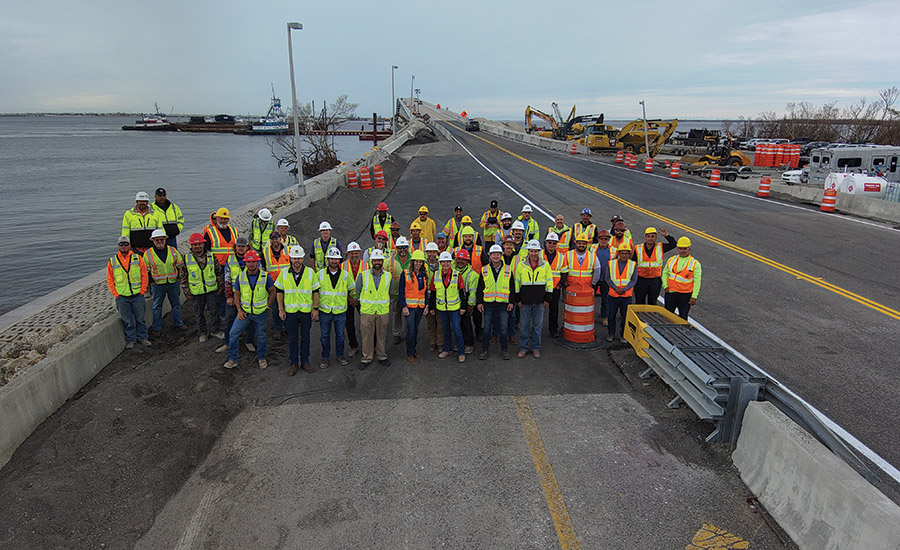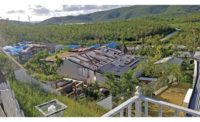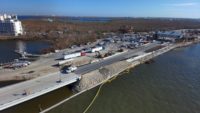Grilling food on the jobsite, linking to first responder phone networks, transporting crews by boat and housing workers in mobile trailers at a nearby airport are all ways Ryan Hamrick’s team worked around extraordinary obstacles to restore access to Florida’s Sanibel Island after its only link to the mainland was cut off when Hurricane Ian made landfall there last Sept. 30.
The skills that made that project a success had propelled Hamrick, a 20-year construction veteran, to division manager for Superior Construction. After Ian, a Category 4 hurricane, he helped lead the $100-million emergency effort to repair the Sanibel Causeway, navigating around power outages, a lack of cell phone service and shuttered businesses limiting supplies and food. Hamrick united people toward the project’s goal and found creative solutions to help thousands of people return to their homes. The team completed the repairs in 15 days—a week ahead of schedule.
“There were so many moving pieces that came together quickly,” says Pete Kelley, chief operating officer for Superior, which formed a joint venture for the causeway work with the De Moya Group within 24 hours.
Crews were at the site within three days. “That type of fast-paced, high-pressure environment has to have somebody like Ryan who’s just very patient, calm and doesn’t overreact,” says Kelley.
Hamrick, 44, pursued civil engineering in college to work on a variety of different projects, like an accelerated bridge job that replaced the superstructure of the Ben Sawyer Swing Bridge in Charleston, S.C., delayed by the area’s first snow in 30 years.
On the Sanibel causeway, two permanent walls are under construction and several more are in the design phase. Work on those is set to start before March and the permanent repairs are scheduled for completion in October, though Hamrick says he hopes to get it done sooner to avoid the 2023 hurricane season.

Thinking outside the box was key to the early completion of emergency repairs to the damaged Sanibel Causeway after Hurricane Ian.
Photos courtesy Superior Construction
Kati Sherrard, corridors program coordinator for the Florida Dept. of Transportation and lead project manager for the Sanibel Causeway, says Hamrick provided strong corporate support and secured what the FDOT team needed when they needed it throughout Florida’s first progressive-design-build contract for the emergency repairs.
“If the work product we receive every day is any reflection of his efforts, it’s outstanding,” Sherrard says. “I have never worked with such a cooperative and invested team.”
Hamrick started at Superior six years ago as a senior project manager. He grew into the role of division manager for central Florida and Tampa.
“When you’re in a situation or a project where things have to happen really quickly, it’s invaluable to have somebody at the helm who’s just real calm under pressure,” says Kelley, speaking of Hamrick.
Sherrard hails Hamrick’s style of open communication, which respects people’s resources and time. He doesn’t overcommunicate, she says, but sees when communication needs to happen and follows up after.
“I can’t underscore enough the level of teamwork,” Hamrick says, of the emergency repair effort at Sanibel causeway. “The flexibility and the partnership with FDOT was incredible.”
Hamrick is currently working on the Tampa Westshore Interchange, an 8-year, $1-billion reconstruction of the interchange of Interstate-275 and Florida Highway 60 near the Tampa International Airport. Projects like the emergency repairs at Sanibel are a sprint, he says, while the Westshore Interchange is a marathon.






Post a comment to this article
Report Abusive Comment